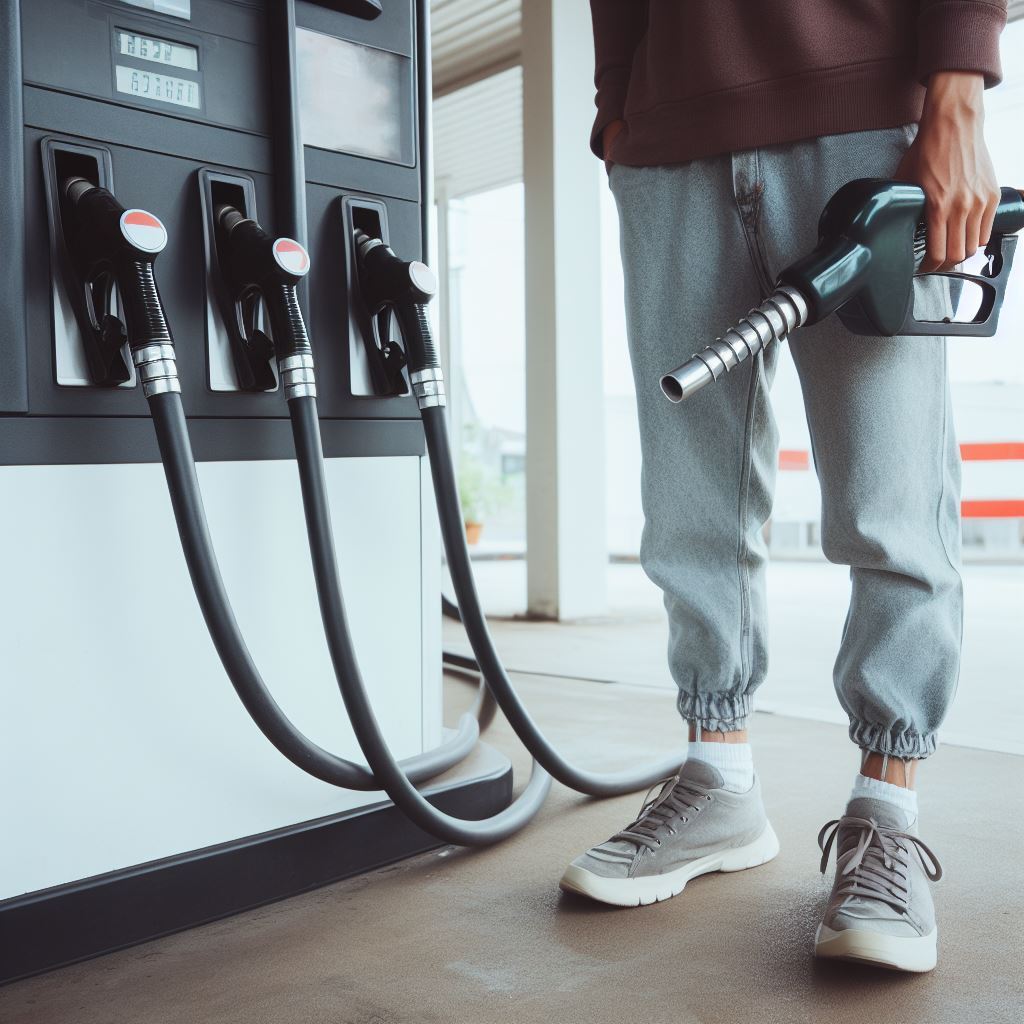Uranium is a low-carbon source; however, the power source can be the deadliest if not handled properly. The Chernobyl Accident 1986 is the biggest example of this. Officially, 31 people were killed in the accident at the Chernobyl Nuclear Power Plant in what is now Ukraine on April 26, 1986; however, reports were made of approximately 4,000 deaths.
Nuclear power is one of the most environmentally friendly ways to generate electricity, but it does create radioactive waste that must be securely disposed of. Furthermore, many individuals are concerned that nuclear energy could be utilized to manufacture nuclear weapons.
Iran’s possible nuclear weaponization has delayed the implementation of the nuclear agreement. The goal of the agreement was to trade off easing restrictions on Iran’s economy for a reduction in the country’s nuclear program. As a result of the United States’ withdrawal from the deal in 2018, Iran has ramped up its nuclear activities.
Raising the concerns level of any possible war in the coming years.
Let’s discuss what happened at Chernobyl and the Iran Nuclear Power Program.

Some bitter facts
- It was Sweden who broke the news first to the world community that something had happened in the USSR.
- Radioactive Iodine, or radioactive isotopes, were the killers, as it was transmitted by the air particles and collected in the thyroid gland, which leads to thyroid cancer and eventually death.
- The city is almost abandoned, but there are some people that live there illegally.
- The palace has many hotbeds where the radioactive material is still active and can still potent to kill you.
- The animals in the area have adapted themselves to the radiation and thriving. Check the dedicated page on X (formerly Twitter)
Scientists found the stray dogs of Chernobyl are 'genetically distinct' 40 years after the massive radiation leak https://t.co/yYTj8VjXgT via @businessinsider
— Chernobyl Gallery (@ChernobylG) March 6, 2023
However, humans cannot survive if there is a 1% abnormality in our species.
Chernobyl Disaster Unfolds

RBMK reactor
RBMK stands for Reaktor Bolshoy Moshchnosti Kanalnyy, which is Russian for “high-power channel-type reactor.” The graphite moderator and the hot water coolant make this nuclear reactor distinct. The reactors at Chernobyl were RBMKs, which were developed and manufactured in the Soviet Union. RBMK reactors have a number of unique features, including:
-
Positive void coefficient:
This means that the power of the reactor increases if the coolant water boils away. This is a safety concern, as it can lead to a runaway chain reaction.
-
Control rods:
The control rods in RBMK reactors are not very effective at absorbing neutrons at low power levels. This can make it difficult to control the reactor at low power.
-
Emergency shutdown system:
The emergency shutdown system in RBMK reactors is slow and unreliable. This makes it difficult to shut down the reactor quickly in the event of an accident.
Due to these design flaws, RBMK reactors are considered to be unsafe.
What Happened to the Reactor?
The No. 4 reactor at the Chernobyl Nuclear Power Plant in the Ukraine detonated at 1:23 AM on April 26, 1986. The explosion occurred because of a failed experiment that involved removing most of the control rods from the reactor’s core, turning off the power-regulating system, and the emergency safety systems.
A great deal of radioactive material was discharged into the air after the explosion, and it dispersed throughout much of Europe, poisoning millions of acres of land and creating widespread health concerns. Radiation sickness, cancer, and other fatal diseases were among the acute health consequences of the accident. Research on the disaster’s long-term health effects is still in its infancy, but preliminary findings suggest an uptick in cancer, heart disease, and other chronic disease risks.
More radioactive material was spilled into the air because a fire broke out in the reactor core after the explosion. It took several days to put out the fire completely.

To contain the radioactive fallout, the Soviet government poured concrete over the reactor. Unfortunately, the sarcophagus was badly made and is now in disrepair. For the Chernobyl plant, a new containment structure was built by an international team starting in 2010. The New Safe Confinement, as it is officially known, was finished in 2016 and is meant to survive for a century.
Radiation contamination at the Chernobyl reactor site is still high and is predicted to remain so for centuries. There is a “30-kilometer exclusion zone” that the Ukrainian government has set up around the reactor. This is a no-go area where the spread of radiation can be tracked.
The Iran Nuclear Deal

In 2015, Iran and the P5+1 (the United States, the United Kingdom, France, Russia, China, and Germany) signed the Joint Comprehensive Plan of Action (JCPOA), also known as the Iran nuclear deal. The sanctions relief was negotiated in exchange for Iran’s nuclear development restrictions.
-
History of the Deal
Years of talks between Iran and the P5+1 culminated in the Iran nuclear deal. The talks started in 2003 but were frequently halted due to differences. The UN Security Council slapped sanctions on Iran in 2006 in an effort to curb the country’s nuclear development.
A framework agreement was negotiated between Iran and the P5+1 in 2013. This agreement opened the stage for the final accord. The agreement was finalized in 2015 and went into effect the following year.
-
Reasons the Deal Halted
The United States left the Iran nuclear accord in 2018. The Trump administration claimed the agreement did not do enough to stop Iran from acquiring nuclear weapons and that it was not harsh enough on Iran.
-
America’s Sanctions on Iran
For decades, the United States has punished Iran with sanctions. The sanctions aim to hold Iran accountable for its complicity in terrorism and for violations of human rights.
-
What Iran Is Doing Right Now to Conduct Its First Test
Iran has ramped up its nuclear operations since the United States pulled out of the nuclear deal. Iran began uranium enrichment to 20% in 2020, a level nearly sufficient for weapon-grade uranium.
-
Iran a Threat for Possible WW3

Iran poses a significant threat to the region and the world if it acquires nuclear weapons. Iran is an enemy of Saudi Arabia and Israel and a friend of Syria and Hezbollah in the region. Iran might threaten its neighbors with blackmail or even attack them if it were to acquire nuclear weapons.
It would not take much for a nuclear war between Iran and Israel to spiral out of control and draw in the United States and other countries. This has the potential to spark World War III.
Connection between Chernobyl and Iran Nuclear Deal
Safety concerns
The RBMK reactor design had multiple problems that led to the Chernobyl accident. These included control rods that were ineffective at absorbing neutrons at low power levels and a positive void coefficient that may cause the reactor to become unstable if the coolant water boiled away.
The nuclear agreement with Iran aimed to reduce worries about the country’s nuclear program. The agreement mandates that Iran allow the International Atomic Energy Agency (IAEA) to inspect its nuclear facilities and places restrictions on the number of centrifuges it can use to enrich uranium.
Transparency
The Soviet government’s secretiveness contributed to the Chernobyl accident. The Soviet government was aware of the dangers inherent in the RBMK reactor design, but it kept this information from the general population and the rest of the world.
Under the terms of the nuclear agreement, Iran must provide detailed information about its nuclear activities. Iran is obligated to allow the IAEA access to all of its nuclear facilities, including uranium mines and enrichment plants.
Risk of proliferation
The Chernobyl disaster served as a stark reminder of the risks associated with nuclear proliferation. It demonstrated that even ostensibly peaceful nuclear programs can result in catastrophic consequences, as evidenced by the unintended consequences of the Soviet Union’s nuclear program, originally intended for weapons-grade uranium production.
A central objective of the nuclear agreement is to prevent Iran from acquiring nuclear weapons. The accord places constraints on Iran’s enrichment capabilities and enriched uranium stockpile alongside provisions designed to ensure that Iran does not divert nuclear materials for military purposes.
Conclusion
Both the Chernobyl tragedy and the Iran nuclear deal underscore the imperative of treating nuclear safety and security with utmost seriousness. The nuclear agreement with Iran represents a concerted effort to avert another calamity on the scale of the Chernobyl disaster, which sent shockwaves throughout the world.
John Miller has been writing about science, gaming, and tech culture for over a decade. He’s a top-rated reviewer with extensive experience helping people find the best deals on tech and more.



